Abstract
Surface wood samples obtained from a Douglas fir log (Pseudotsuga menziesii) in a Pacific Northwest stream were incubated in vitro with [14C]lignocellulose in a defined mineral salts medium supplemented with 10 mg of N liter−1 of 15N-labeled NO3− (50 atom% 15N). Evolution of 14CO2, distribution and isotopic dilution of 15N, filtrate N concentrations, and the rates of denitrification, N2 fixation, and respiration were measured at 6, 12, and 18 days of incubation. The organic N content of the lignocellulose-wood sample mixture had increased from 132 μg of N to a maximum of 231 μg of N per treatment after 6 days of incubation. Rates of [14C]lignocellulose decomposition were greatest during the first 6 days and then began to decline over the remaining 12 days. Total CO2 evolution was also highest at day 6 and declined steadily over the remaining duration of the incubation. Filtrate NH4+-N increased from background levels to a final value of 57 μg of N per treatment. Filtrate NO3− N completely disappeared by day 6, and organic N showed a slight decline between days 12 and 18. The majority of the 15N that could be recovered appeared in the particulate organic fraction by day 6 (41 μg of N), and the filtrate NH4+ N fraction contained 11 μg of 15N by day 18. The 15N enrichment values of the filtrate NH4+ and the inorganic N associated with the particulate fraction had increased to approximately 20 atom% 15N by 18 days of incubation, whereas the particulate organic fraction reached its highest enrichment by day 6. Measurements of N2 fixation and denitrification indicated an insignificant gain or loss of N from the experimental system by these processes. The data show that woody debris in stream ecosystems might function as a rapid and efficient sink for exogenous N, resulting in stimulation of wood decomposition and subsequent activation of other N cycling processes.
Full text
PDF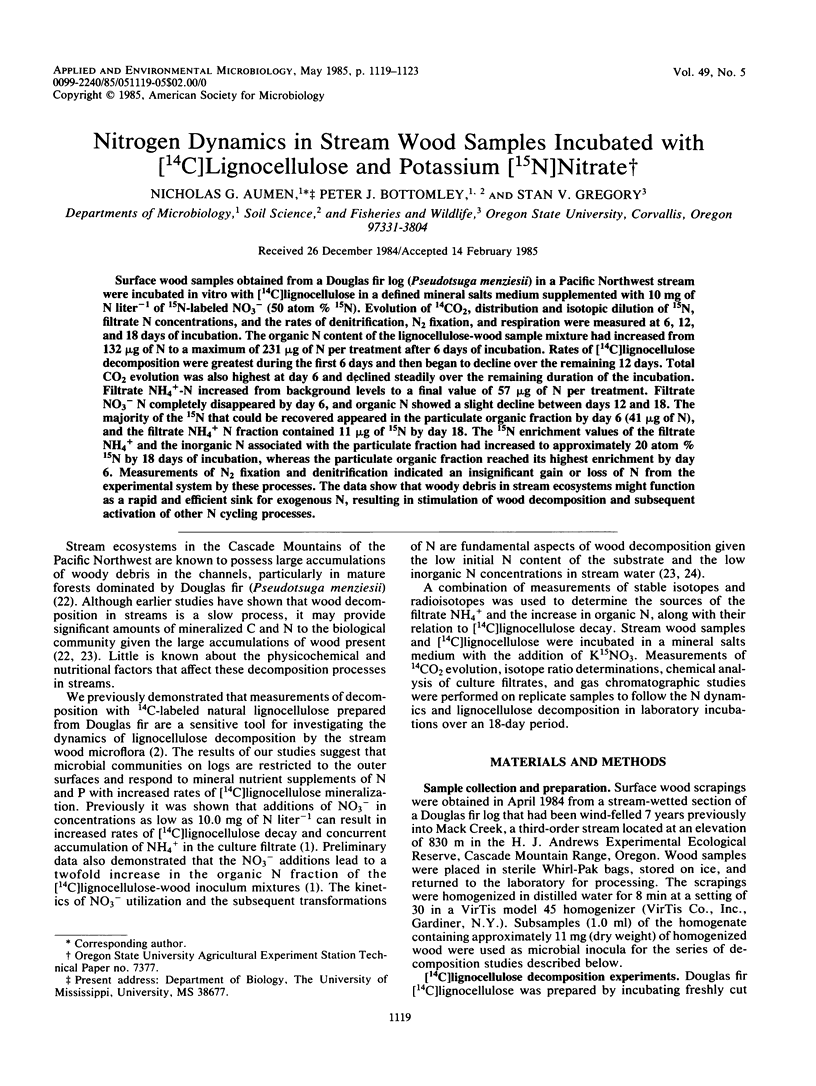
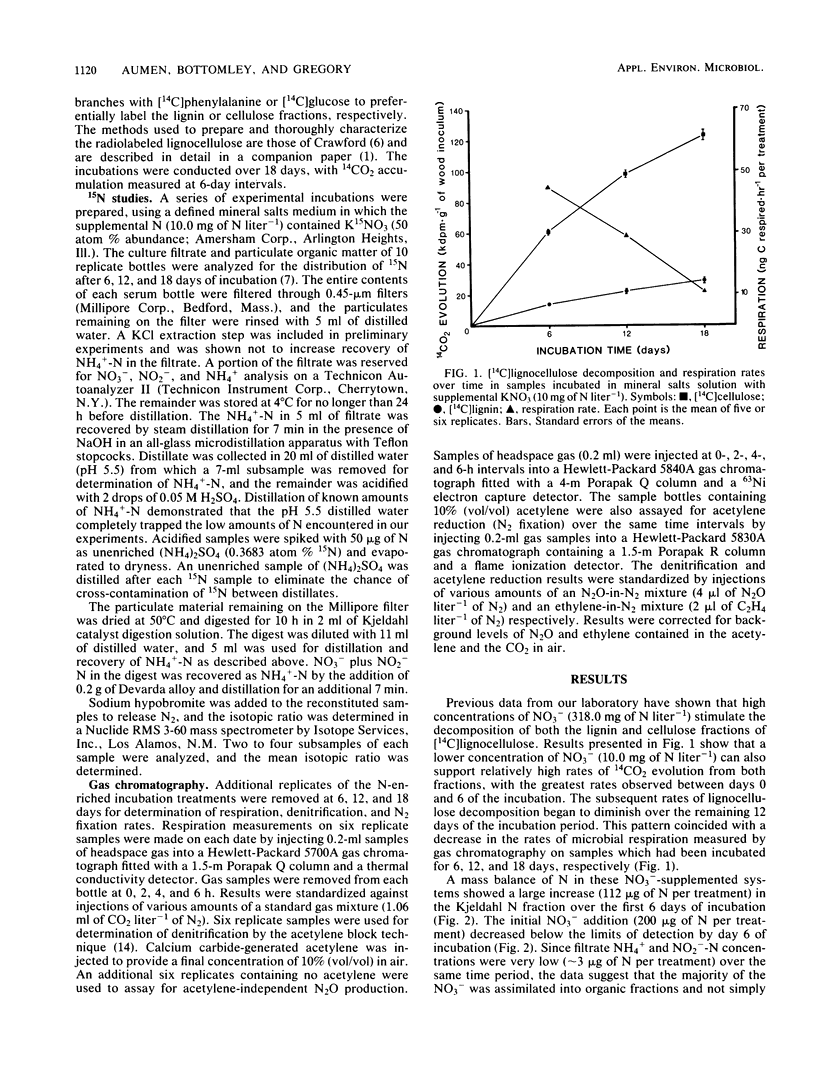
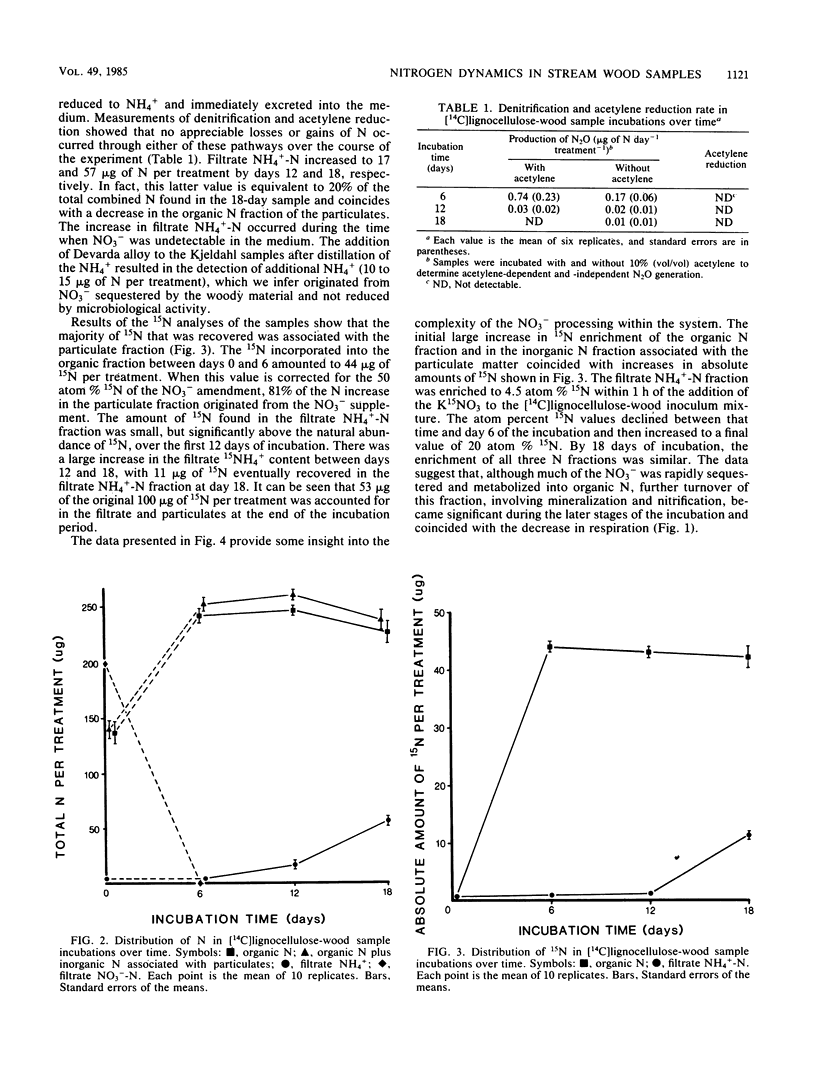
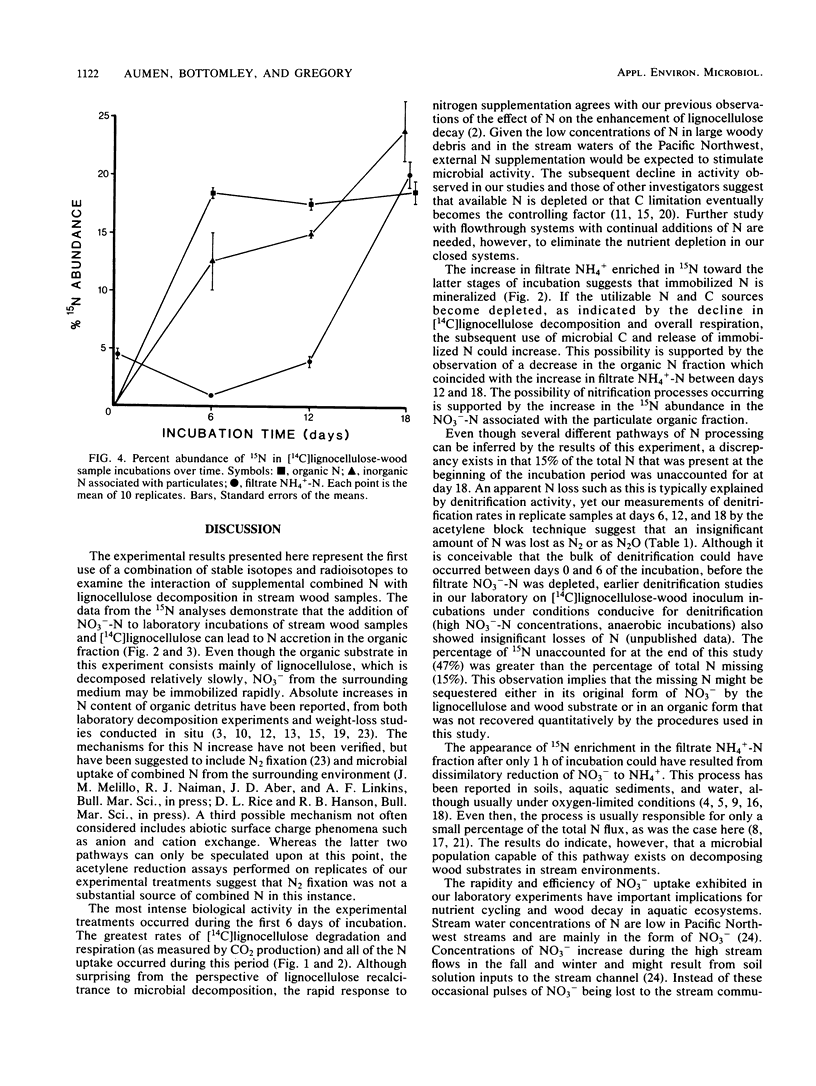
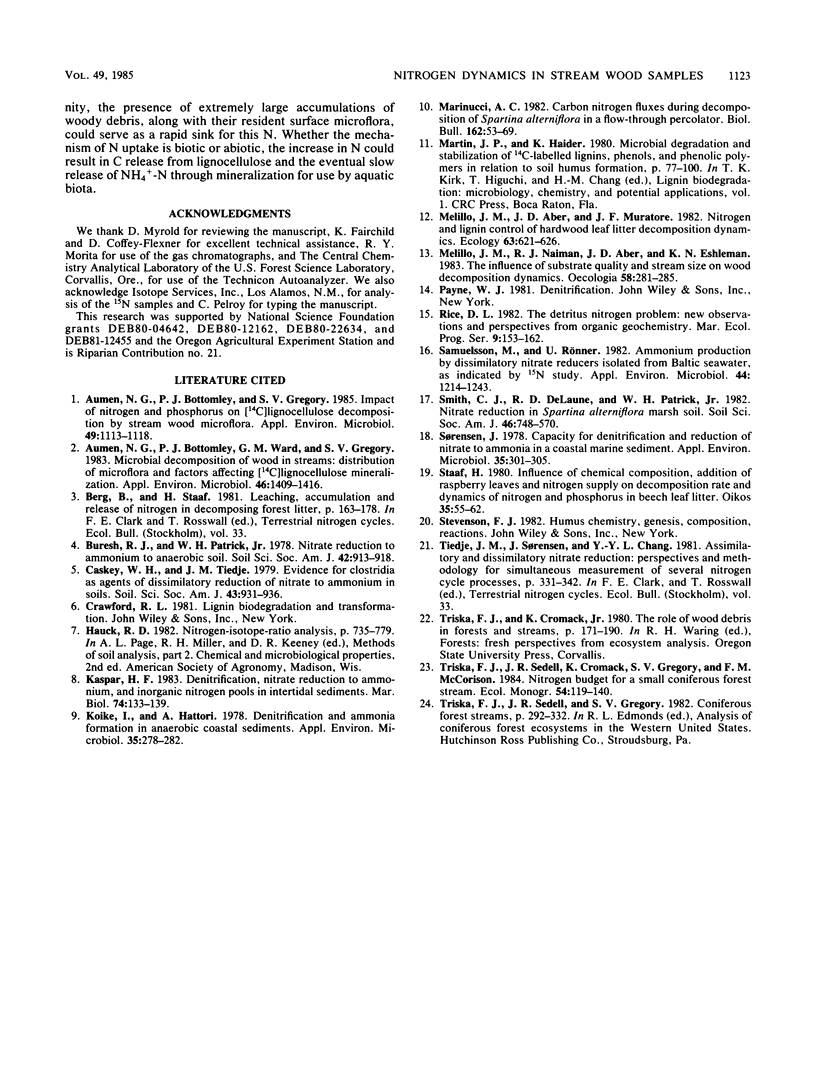
Selected References
These references are in PubMed. This may not be the complete list of references from this article.
- Aumen N. G., Bottomley P. J., Gregory S. V. Impact of nitrogen and phosphorus on [C]lignocellulose decomposition by stream wood microflora. Appl Environ Microbiol. 1985 May;49(5):1113–1118. doi: 10.1128/aem.49.5.1113-1118.1985. [DOI] [PMC free article] [PubMed] [Google Scholar]
- Aumen N. G., Bottomley P. J., Ward G. M., Gregory S. V. Microbial decomposition of wood in streams: distribution of microflora and factors affecting [C]lignocellulose mineralization. Appl Environ Microbiol. 1983 Dec;46(6):1409–1416. doi: 10.1128/aem.46.6.1409-1416.1983. [DOI] [PMC free article] [PubMed] [Google Scholar]
- Koike I., Hattori A. Denitrification and ammonia formation in anaerobic coastal sediments. Appl Environ Microbiol. 1978 Feb;35(2):278–282. doi: 10.1128/aem.35.2.278-282.1978. [DOI] [PMC free article] [PubMed] [Google Scholar]
- Samuelsson M. O., Rönner U. Ammonium production by dissimilatory nitrate reducers isolated from baltic sea water, as indicated by N study. Appl Environ Microbiol. 1982 Nov;44(5):1241–1243. doi: 10.1128/aem.44.5.1241-1243.1982. [DOI] [PMC free article] [PubMed] [Google Scholar]
- Sørensen J. Capacity for denitrification and reduction of nitrate to ammonia in a coastal marine sediment. Appl Environ Microbiol. 1978 Feb;35(2):301–305. doi: 10.1128/aem.35.2.301-305.1978. [DOI] [PMC free article] [PubMed] [Google Scholar]


